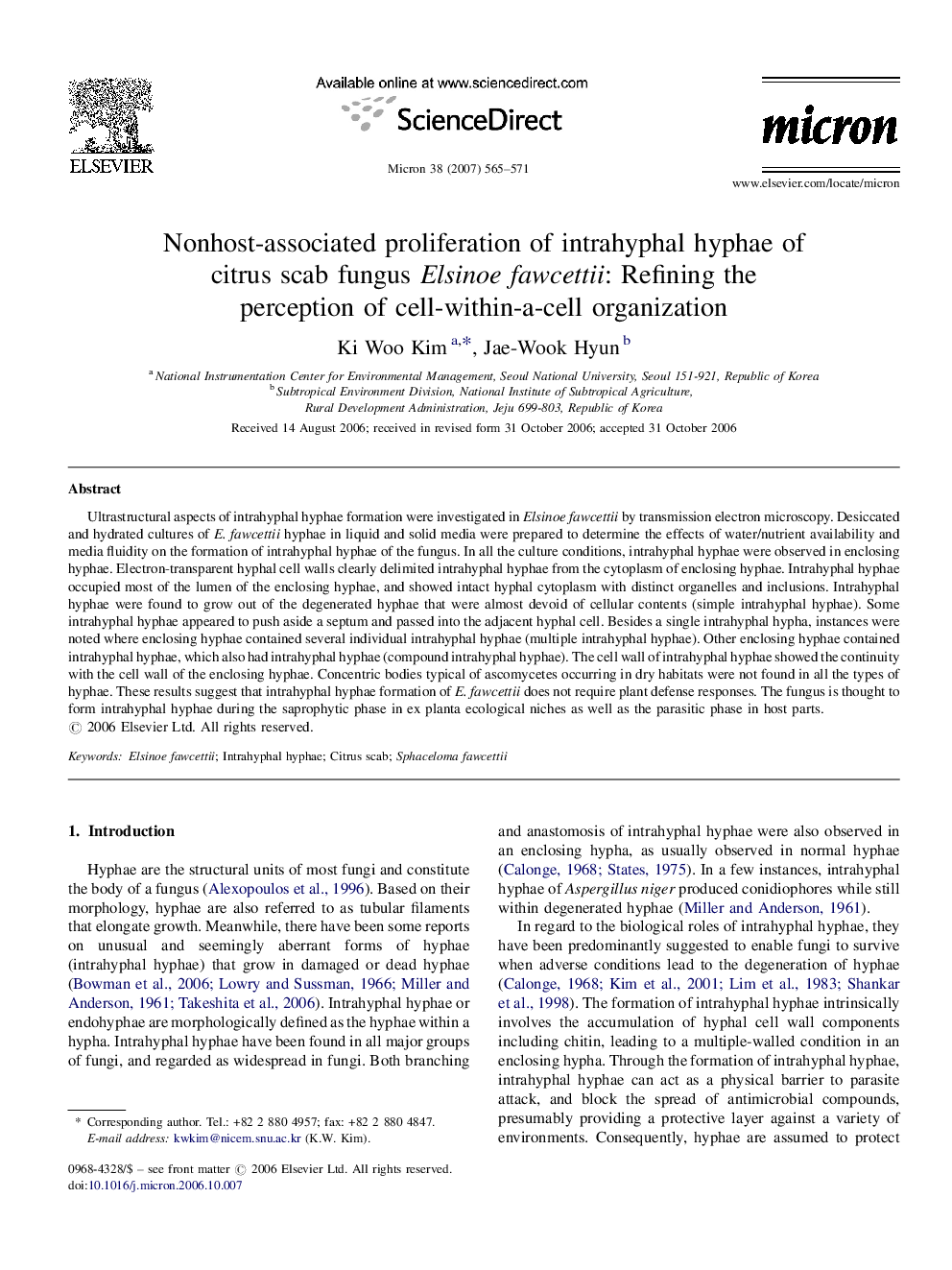| Article ID | Journal | Published Year | Pages | File Type |
|---|---|---|---|---|
| 1589791 | Micron | 2007 | 7 Pages |
Abstract
Ultrastructural aspects of intrahyphal hyphae formation were investigated in Elsinoe fawcettii by transmission electron microscopy. Desiccated and hydrated cultures of E. fawcettii hyphae in liquid and solid media were prepared to determine the effects of water/nutrient availability and media fluidity on the formation of intrahyphal hyphae of the fungus. In all the culture conditions, intrahyphal hyphae were observed in enclosing hyphae. Electron-transparent hyphal cell walls clearly delimited intrahyphal hyphae from the cytoplasm of enclosing hyphae. Intrahyphal hyphae occupied most of the lumen of the enclosing hyphae, and showed intact hyphal cytoplasm with distinct organelles and inclusions. Intrahyphal hyphae were found to grow out of the degenerated hyphae that were almost devoid of cellular contents (simple intrahyphal hyphae). Some intrahyphal hyphae appeared to push aside a septum and passed into the adjacent hyphal cell. Besides a single intrahyphal hypha, instances were noted where enclosing hyphae contained several individual intrahyphal hyphae (multiple intrahyphal hyphae). Other enclosing hyphae contained intrahyphal hyphae, which also had intrahyphal hyphae (compound intrahyphal hyphae). The cell wall of intrahyphal hyphae showed the continuity with the cell wall of the enclosing hyphae. Concentric bodies typical of ascomycetes occurring in dry habitats were not found in all the types of hyphae. These results suggest that intrahyphal hyphae formation of E. fawcettii does not require plant defense responses. The fungus is thought to form intrahyphal hyphae during the saprophytic phase in ex planta ecological niches as well as the parasitic phase in host parts.
Related Topics
Physical Sciences and Engineering
Materials Science
Materials Science (General)
Authors
Ki Woo Kim, Jae-Wook Hyun,
